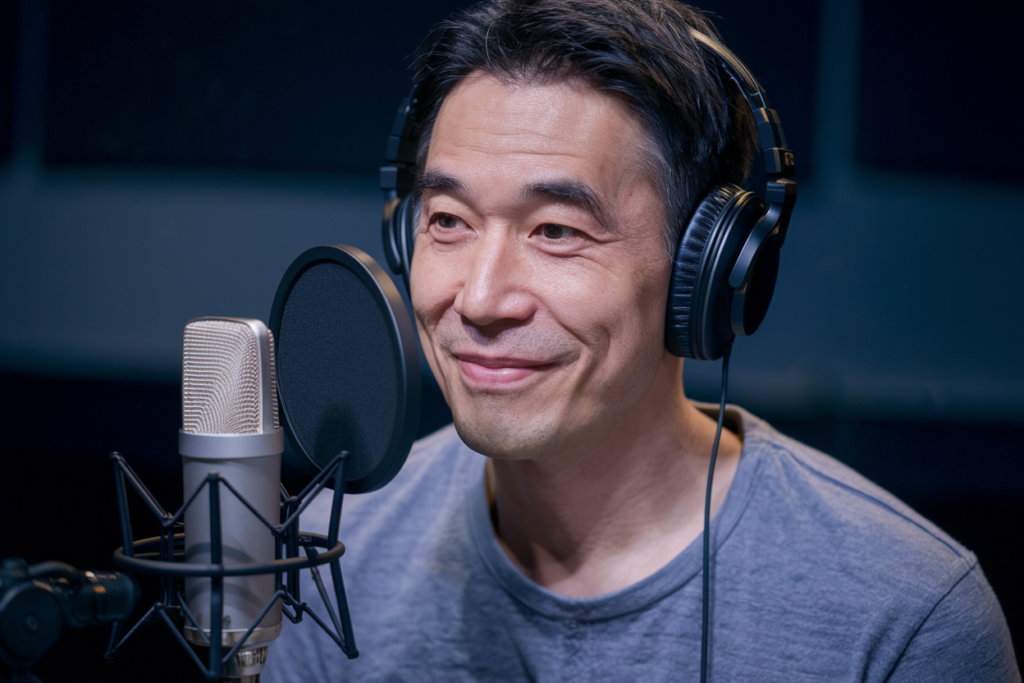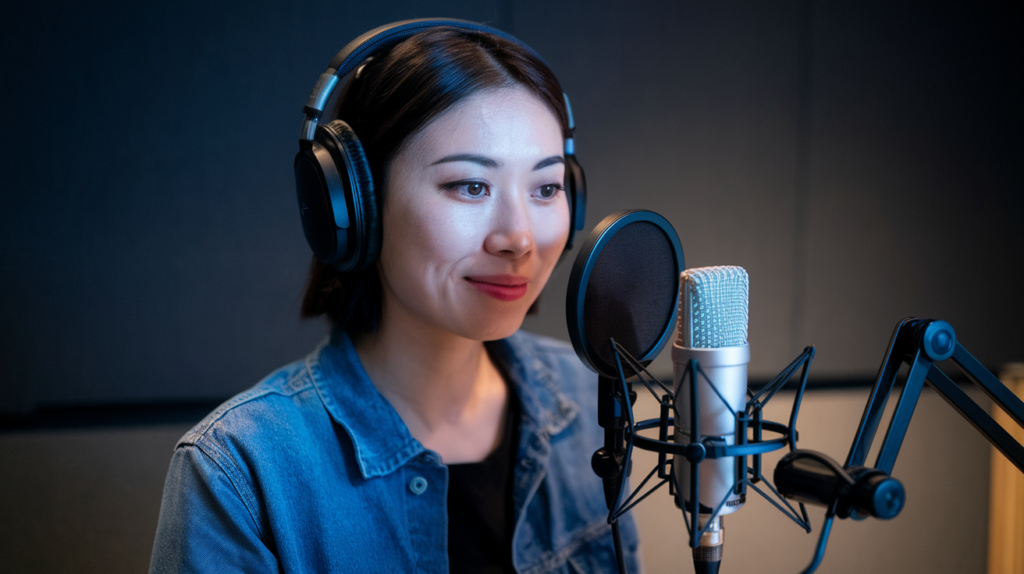Key Takeaways
- Diversity of Accents: Japanese accents vary greatly across regions, reflecting the country’s rich cultural tapestry and unique phonetic characteristics.
- Major Accents Explained: Key regional accents include Tokyo’s Hyojungo (Standard Japanese), Kansai’s lively intonation, Hokkaido’s diverse dialects influenced by Ainu language, and Okinawa’s distinct sound.
- Cultural Significance: Regional accents carry cultural meanings that enhance social identity and pride, influencing perceptions of friendliness and hospitality in different areas.
- Influences on Accents: Historical events, socioeconomic factors, and media exposure significantly shape the development of regional accents in Japan.
- Impact of Media and Globalization: The dissemination of media has led to a blending of accents while also fostering an appreciation for local dialects among global audiences.
Ever wondered why Japanese accents vary so much from region to region? These regional differences in Japanese accents can be fascinating and sometimes puzzling. Whether you’re planning a trip to Japan or just curious about the language, understanding these nuances can enhance your experience.
From the melodic tones of Kyoto to the distinct dialects of Hokkaido, each area boasts its own unique way of speaking. You might even find that certain phrases take on entirely different meanings depending on where you are! Dive into this exploration of Japanese accents, and you’ll uncover not just linguistic diversity but also rich cultural stories behind each variation. Ready to discover how these accents shape communication across Japan?
Overview of Japanese Accents
Japanese accents vary significantly across regions, reflecting the rich cultural tapestry of the country. Each area boasts unique phonetic characteristics and intonations that contribute to diverse speaking styles.
Key Regional Accents
- Tokyo Accent (Standard Japanese): Known as “Hyojungo,” this accent serves as the national standard. You’ll notice a relatively flat tone with clear vowel pronunciation. It’s widely used in media, making it familiar to many learners.
- Kansai Accent: Found in cities like Osaka and Kyoto, Kansai accents are often perceived as more melodic and lively. The intonation rises at the end of sentences, giving it a distinct rhythm. Some phrases differ entirely from Standard Japanese.
- Hokkaido Dialects: In Hokkaido, you’ll encounter various dialects influenced by indigenous Ainu language elements. Pronunciation can differ significantly from the mainland, making communication challenging for newcomers.
- Okinawan Dialect: Okinawa features its own set of unique pronunciations and vocabulary. While closely related to Japanese, its distinct sound may feel foreign even to native speakers from other regions.
Cultural Impact
Accents carry cultural significance in Japan; they reveal social identity and regional pride. For instance, people often associate certain accents with hospitality or friendliness based on their experiences in those areas. Understanding these nuances not only enhances your language skills but also enriches your interactions while you explore Japan.
By recognizing these regional differences in accents, you’ll not only improve your comprehension but also connect more deeply with locals during your travels or conversations about voice talent within different contexts.
Major Regions and Their Accents
Exploring the major regions of Japan reveals a rich tapestry of accents that reflect cultural heritage and regional identity. Each accent offers unique characteristics, making them essential for those interested in communication or voice talent.
Kanto Region
The Kanto region, home to Tokyo, showcases the Hyojungo accent. This standard Japanese accent features flat intonation and clear vowel pronunciation. You’ll find it widely used in media and education, making it an excellent choice for voiceovers aimed at a broad audience. The clarity of this accent enhances understanding, allowing your message to resonate with listeners seamlessly.
Kansai Region
In contrast stands the Kansai region, particularly cities like Osaka and Kyoto. Here, the accent is lively and expressive. It utilizes rising intonations that convey warmth and humor. Unique phrases add flair to conversations; for example, “akan” means “no good.” For voice artists aiming to connect emotionally with their audience or evoke specific regional nuances, mastering this dialect can elevate your projects significantly.
Hokkaido Region
Hokkaido’s dialects carry influences from Ainu language roots, presenting distinct pronunciation patterns that set them apart from other regions. While some expressions may be challenging for outsiders to grasp fully, they offer a rich opportunity for voice actors who want to capture local flavor in their performances. Understanding these intricacies can enhance authenticity in any audio project targeting northern audiences.
Kyushu Region
Kyushu accents vary significantly across different prefectures but often exhibit softer tones compared to Kanto or Kansai accents. In places like Fukuoka, you’ll notice unique vocabulary choices alongside distinctive speech rhythms that create an inviting atmosphere. Voice over talent looking to stand out should consider embracing these variations when tailoring content for diverse demographics throughout Japan.
Understanding these regional accents not only enriches your linguistic knowledge but also sharpens your skills as a voice artist or actor while improving customer engagement through relatable content delivery.
Factors Influencing Regional Accents
Regional accents in Japan arise from a blend of historical, social, and economic factors. Understanding these influences can deepen your appreciation for the nuances in pronunciation and expression.
Historical Context
History plays a crucial role in shaping regional accents. Each area has its own linguistic evolution influenced by migration, trade routes, and cultural exchanges. For instance, the Kansai region’s accent reflects centuries of commerce and interaction among diverse groups. Unique phrases or pronunciation patterns stem from historical events that left their mark on local language use. Knowing this context not only enhances your understanding but also enriches your engagement with voice talents who embody these regional characteristics.
Socioeconomic Factors
Socioeconomic conditions contribute significantly to accent development as well. Urban areas like Tokyo often attract individuals seeking job opportunities, leading to a blending of dialects that can create new variations over time. Conversely, rural regions maintain more traditional accents due to less outside influence. This dynamic affects how voice actors approach their craft; they may adopt specific intonations or styles based on the target audience’s background or location. Recognizing these socioeconomic influences helps you appreciate the artistry behind each voiceover performance while connecting more authentically with diverse listeners across Japan’s rich tapestry of accents.
Impact of Media and Globalization
Media and globalization significantly influence regional differences in Japanese accents. The proliferation of television, film, and online content exposes audiences to various dialects and pronunciations. As people consume media from different regions, they often adopt elements of those accents into their speech. This blending creates a dynamic linguistic landscape where even traditional accents evolve over time.
In major cities like Tokyo, the Hyojungo accent dominates due to its prominence in national broadcasts. Voice actors using this accent appeal to broad audiences because it embodies clarity and neutrality. However, local flavors persist as voice artists incorporate unique regional phrases or tones into their performances. Such authenticity resonates deeply with listeners who appreciate cultural nuances.
Globalization also plays a role in shaping how accents are perceived internationally. As Japanese media finds its way onto global platforms, there’s an increased awareness of the rich tapestry of regional dialects among non-Japanese speakers. This exposure can enhance the demand for diverse voice talents capable of authentic representation across various projects.
Moreover, social media allows for instant sharing and interaction among users from different backgrounds. You may notice that certain phrases or intonations become trendy beyond their original regions, further impacting how people communicate with each other. For voice talent aiming to connect with audiences both locally and globally, understanding these shifts becomes essential.
As you explore opportunities for collaboration with voiceover professionals, consider how these regional variations enrich the storytelling experience. They provide depth that engages listeners on multiple levels—culturally and emotionally—creating memorable connections through words spoken by skilled voice actors familiar with these distinctions.
Embracing such diversity not only enhances your project but also showcases a commitment to authentic representation within your narrative framework. So whether you’re looking for dynamic characters or heartfelt narrations, recognizing the impact of media and globalization on Japanese accents will guide you toward selecting the right voice over talent for your needs.
Conclusion
Embracing the regional differences in Japanese accents not only enhances your understanding of the language but also deepens your connection to its culture. Each accent tells a story shaped by history and social dynamics, revealing unique insights into local identities. Whether you’re traveling through Japan or working in voice talent, recognizing these nuances can transform your experience.
By appreciating the melodic tones of Kyoto or the lively intonations of Kansai, you unlock a richer communication style that resonates with locals. These accents are more than just variations; they’re vital threads in Japan’s cultural fabric. Engaging with them opens doors to authentic interactions and meaningful exchanges, making your journey through the language truly rewarding.
Frequently Asked Questions
What are the main regional accents in Japan?
Japan features several distinct accents, with the Tokyo accent (Hyojungo) as the national standard. Other notable accents include the lively Kansai accent, found in Osaka and Kyoto; Hokkaido dialects influenced by Ainu; and the unique Okinawan dialect. Each accent reflects local culture and can impact communication.
How do Japanese accents affect language learning?
Understanding Japanese accents enriches language learning by providing insights into pronunciation, intonation, and regional phrases. This knowledge enhances conversational skills and helps learners connect more deeply with locals during travels or cultural exchanges.
Why is the Kansai accent considered lively?
The Kansai accent is characterized by its rising intonations and unique expressions, which convey emotion effectively. This liveliness makes it a favorite among speakers for informal conversations and adds depth to storytelling.
How has globalization affected Japanese accents?
Globalization has led to increased exposure of various Japanese dialects through media and online platforms. As a result, traditional accents evolve while gaining wider recognition among non-Japanese speakers, fostering a demand for diverse voice talents that reflect this linguistic richness.
What role does history play in shaping regional accents in Japan?
Historical events such as migration patterns, trade routes, and socioeconomic changes have significantly influenced Japan’s regional accents. These factors contribute to how different areas maintain their linguistic identities or blend due to urbanization.
Why should voice actors embrace regional variations?
Voice actors should embrace regional variations to enhance authenticity in their performances. Understanding local nuances allows them to engage diverse audiences more effectively while bringing characters or narratives to life through culturally relevant expression.







